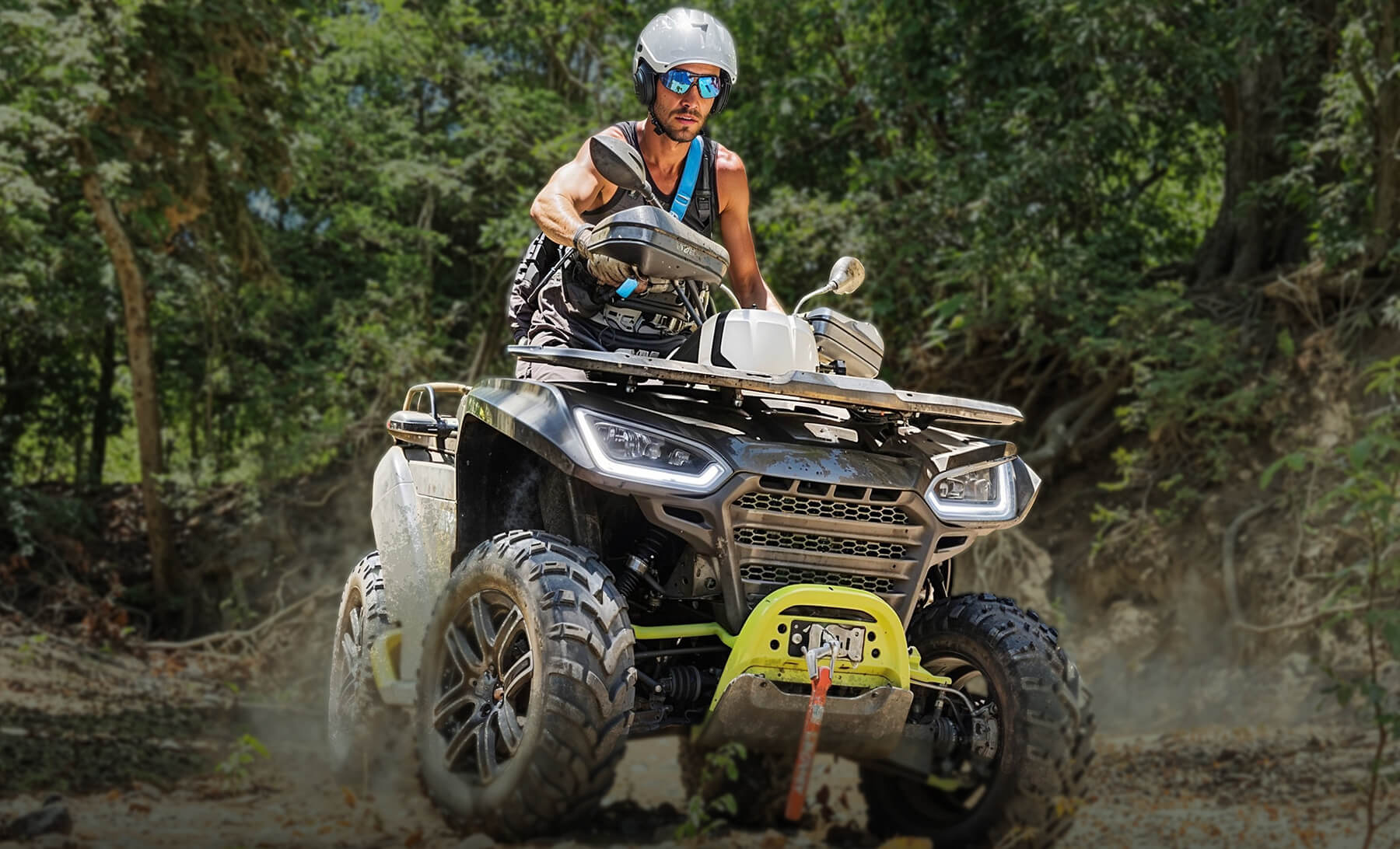Costa Rica’s Guanacaste region is renowned for its incredible biodiversity, and Tamarindo’s unique landscape offers wildlife enthusiasts an exceptional opportunity to observe various species in their natural habitats. ATV tours in Tamarindo provide an exciting way to explore these diverse ecosystems, from pristine beaches to lush forest edges. While wildlife sightings can never be guaranteed, this guide will help you understand what creatures you might encounter during your adventure.
All the wildlife species mentioned in this guide are based on our personal encounters during ATV tours in the stunning landscapes of North and South Tamarindo. Each observation reflects the unique beauty and surprises that nature offers as we explore beaches, forest edges, and gardens. The list continues to grow as we venture into secluded areas with our adventurous clients, uncovering new habitats and wildlife moments.
We invite you to join us on this journey of discovery—because every tour is not just an adventure, but also a chance to connect with the remarkable biodiversity that makes Tamarindo so unforgettable.
Who knows?
You might help us add another species to this ever-evolving list!
Best Times for Wildlife Viewing
The early morning hours often provide the most rewarding wildlife experiences during Tamarindo ATV tours. Our earliest tours begin at 7:30 AM, when many species are most active. Whether you choose a 2-hour introduction to Tamarindo’s wildlife, a 3-hour exploration, or an immersive 4-hour adventure, each tour offers unique opportunities for wildlife observation during strategic stops.
During these pauses, our experienced guides help spot and identify local fauna while ensuring respectful observation distances. The key to successful wildlife viewing is patience and quietness during these designated stops – a striking contrast to the exciting ATV rides between locations.
What wildlife can you spot on your ATV tour in Tamarindo?
An ATV tour in Tamarindo isn’t just about exploring thrilling trails and scenic beaches—it’s your chance to experience Costa Rica’s extraordinary wildlife up close. Imagine howler monkeys vocalizing from the treetops, colorful birds darting through the trees, bright green and orange iguanas and lizards soaking up the sun. You might catch sight of coatis foraging in the underbrush, crocodiles lurking near riverbanks, or even a shy armadillo scurrying through the forest.
Let’s discover the incredible creatures that make Tamarindo a haven for wildlife lovers and adventurous explorers.
Wildlife by Natural Habitats
Beach and Coastal Areas
Tamarindo’s coastal zones, stretching from the northern beaches to the southern shores, host a fascinating array of wildlife. The Brown Pelican (Pelecanus occidentalis) is a frequent sight, showcasing impressive diving displays as they fish in the waters along our tour routes. These skilled hunters can be spotted gliding just above the waves or perched on coastal rocks during breaks in your ATV adventure.
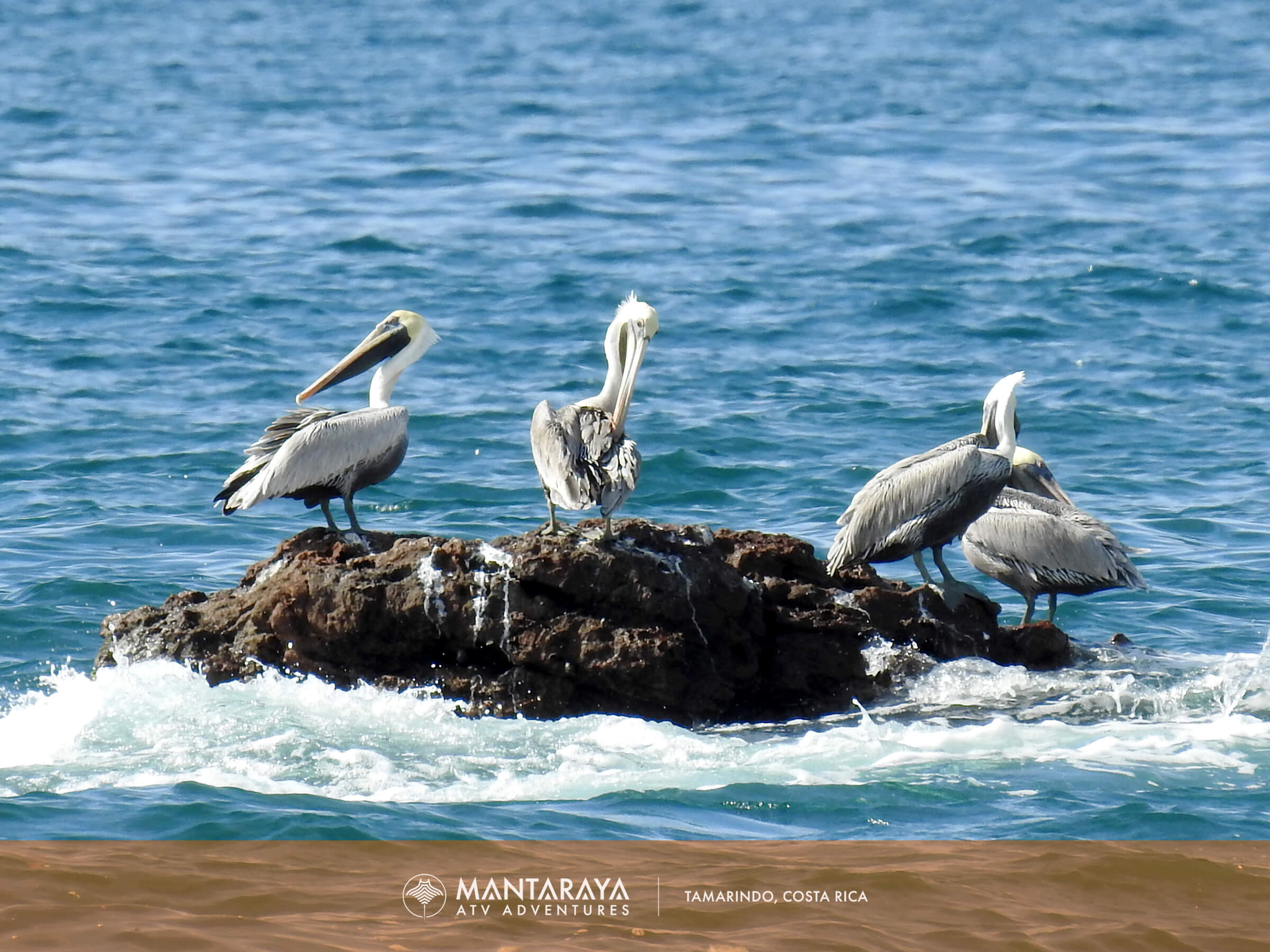

Fun Facts About Brown Pelicans
- Brown Pelicans are one of the few pelican species that hunt by plunge-diving, sometimes diving from as high as 60 feet to catch fish.
- Their expandable throat pouch can hold up to three gallons of water and fish – three times the capacity of their stomachs.
- Despite their awkward appearance on land, Brown Pelicans are strong fliers, often gliding in elegant formations.
One of the most dramatic natural phenomena you might witness involves Black Vultures (Coragyps atratus) along the beaches. During one memorable tour, we observed these opportunistic birds during a sea turtle hatching event – a stark reminder of nature’s complex relationships. While the sight might seem harsh to some visitors, it represents the delicate balance of Costa Rica’s coastal ecosystems.
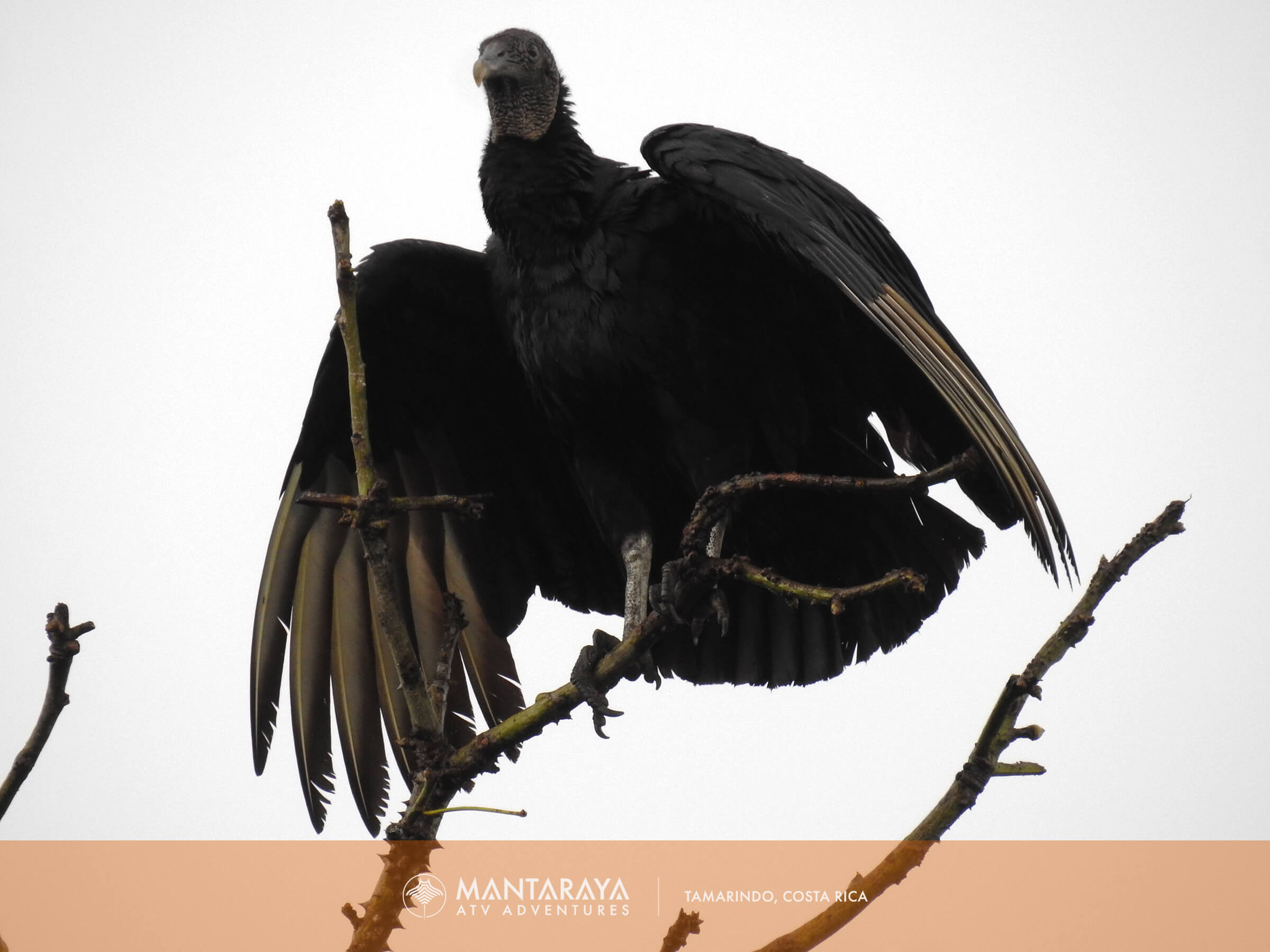

Fun Facts About Black Vultures
- Black Vultures rely heavily on sight to find food and often follow Turkey Vultures, which have a superior sense of smell.
- They are highly social birds, often roosting in large communal groups.
- Unlike most birds, Black Vultures will aggressively defend their food from others, including larger predators.
In the estuaries and river mouths around Tamarindo, American Crocodiles (Crocodylus acutus) can sometimes be observed from safe distances. These ancient reptiles serve as a reminder to respect wildlife boundaries and follow guide instructions carefully during Tamarindo ATV tours.
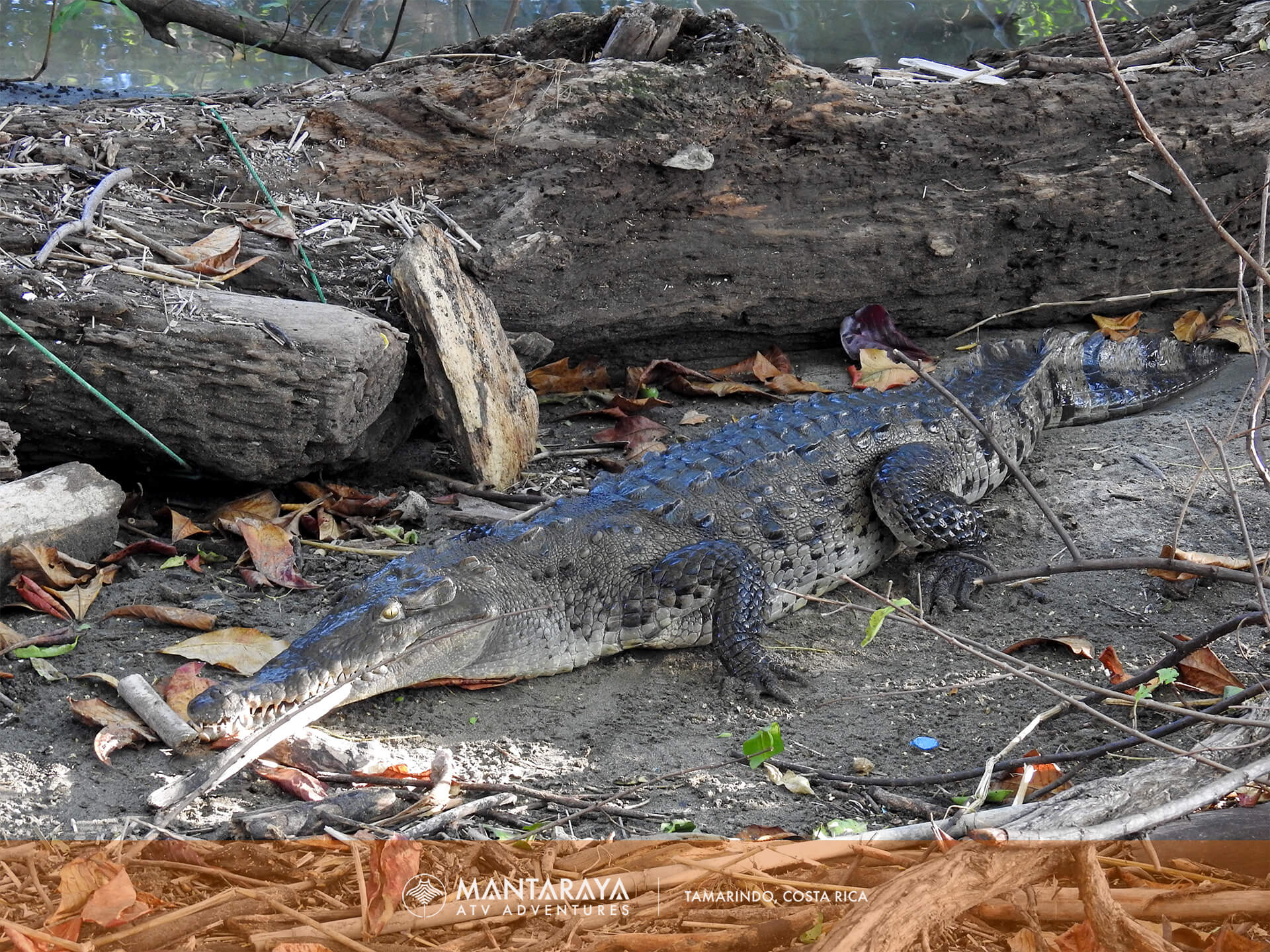

Fun Facts About American Crocodiles
- American Crocodiles can grow up to 20 feet long, making them one of the largest crocodilian species in the Americas.
- Their ability to tolerate saltwater allows them to thrive in coastal estuaries and river mouths.
- These reptiles can go months without eating, surviving on stored energy reserves.
Forest Edge and Vegetated Areas
The forest edges along our tour routes create perfect habitats for some of Costa Rica’s most colorful residents. During one particularly memorable tour near Bahia de los Piratas, we encountered the brilliant Summer Tanager (Piranga rubra), its scarlet feathers providing a stunning contrast against the green foliage.


Fun Facts About Summer Tanager
- The vibrant red color of the male Summer Tanager is caused by carotenoids in their diet of berries and insects.
- Known as “bee specialists,” these birds have a unique behavior of rubbing captured bees against a branch to remove their stingers before eating them.
- Summer Tanagers are long-distance migrators, traveling between North and South America.
These areas also host the impressive Lineated Woodpecker (Dryocopus lineatus), whose distinctive drumming often echoes through the trees.
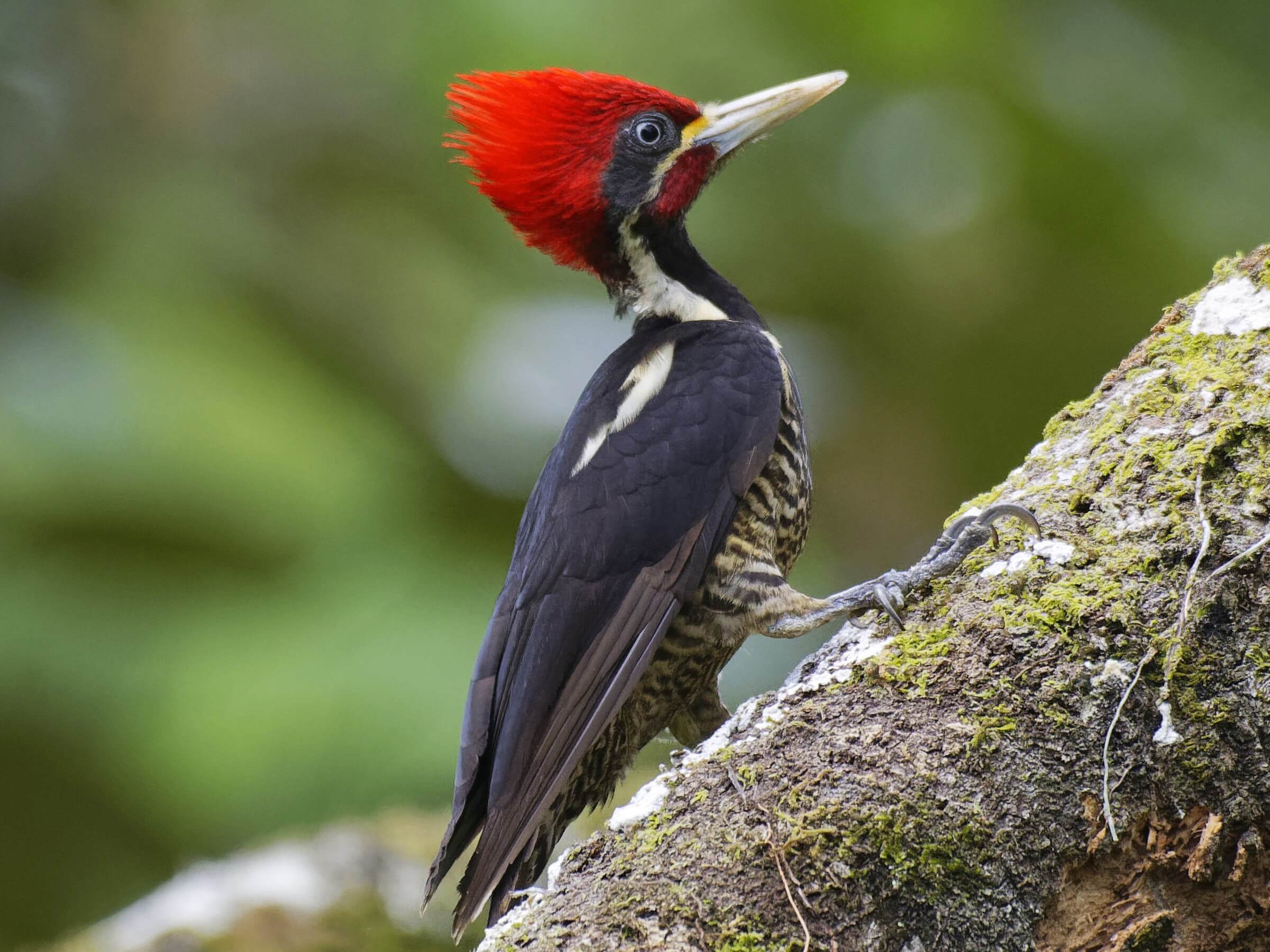

Fun Facts About Lineated Woodpeckers
- This species uses its strong bill to carve deep cavities in trees, which later serve as homes for other animals.
- Their drumming is not just for feeding; it’s also a key communication tool to establish territory or attract mates.
- Lineated Woodpeckers often pair for life and work together to raise their young.
The majestic Yellow-Naped Amazon (Amazona auropalliata) and White-fronted Amazon (Amazona albifrons) parrots frequently make appearances in these zones, their distinctive calls adding to the forest chorus.
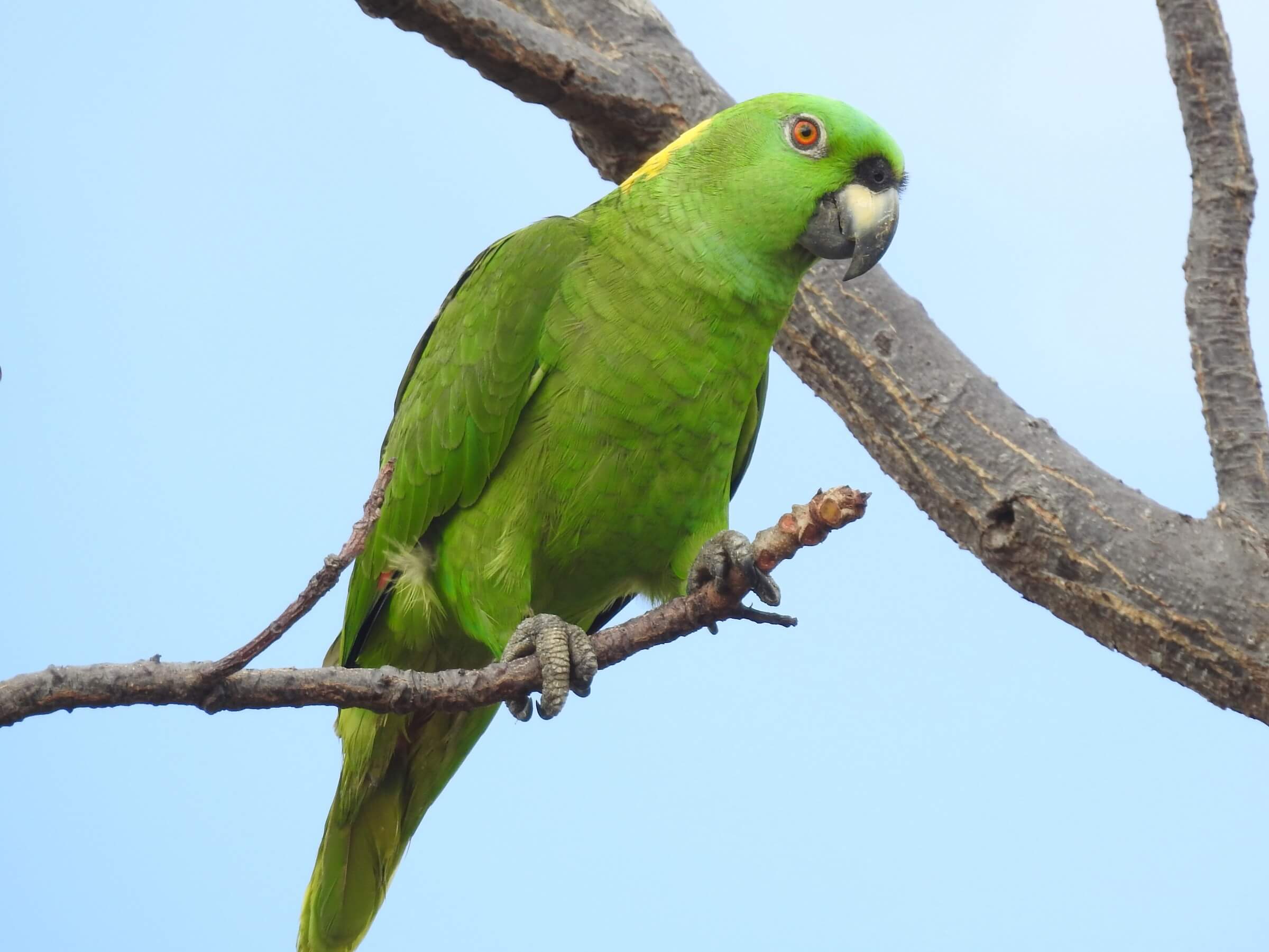

Fun Facts About Yellow-Naped Amazon
- These parrots are highly intelligent and can mimic human speech with remarkable clarity.
- The yellow patch on the back of their necks is not always visible in juveniles and develops with age.
- They form monogamous bonds and can live up to 60 years in the wild.
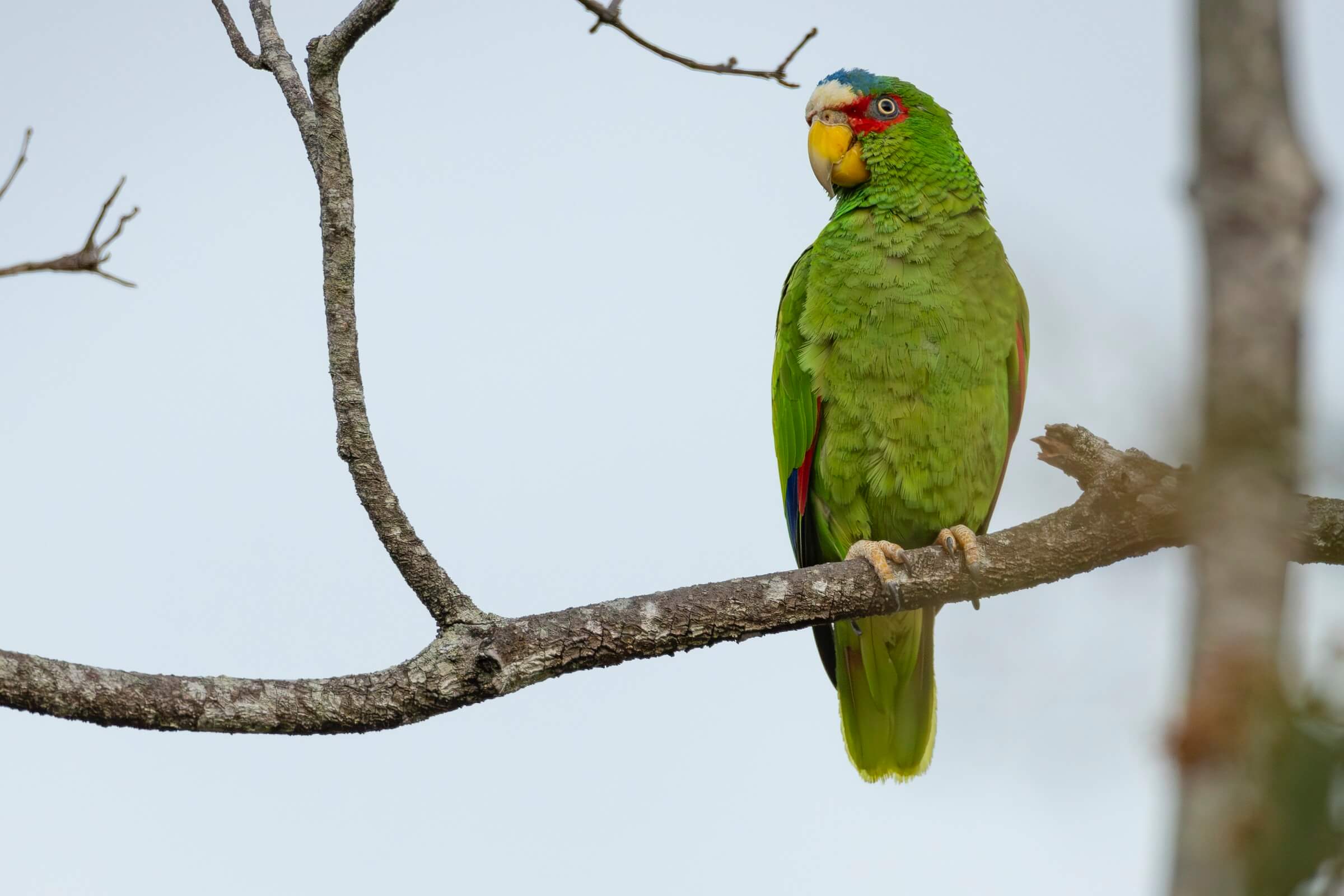

Fun Facts About White-fronted Amazons
- This is the smallest Amazon parrot species, growing only up to 10 inches in length.
- White-fronted Amazons are known for their playful antics and noisy chatter in groups.
- Unlike many parrots, females have a unique red patch on their heads, making them easy to distinguish.
Perhaps most intriguing is the Boa Constrictor (Boa imperator), which we occasionally spot in areas with high grass near water sources. These non-venomous snakes, while impressive, are typically more focused on avoiding contact than engaging with tour groups.
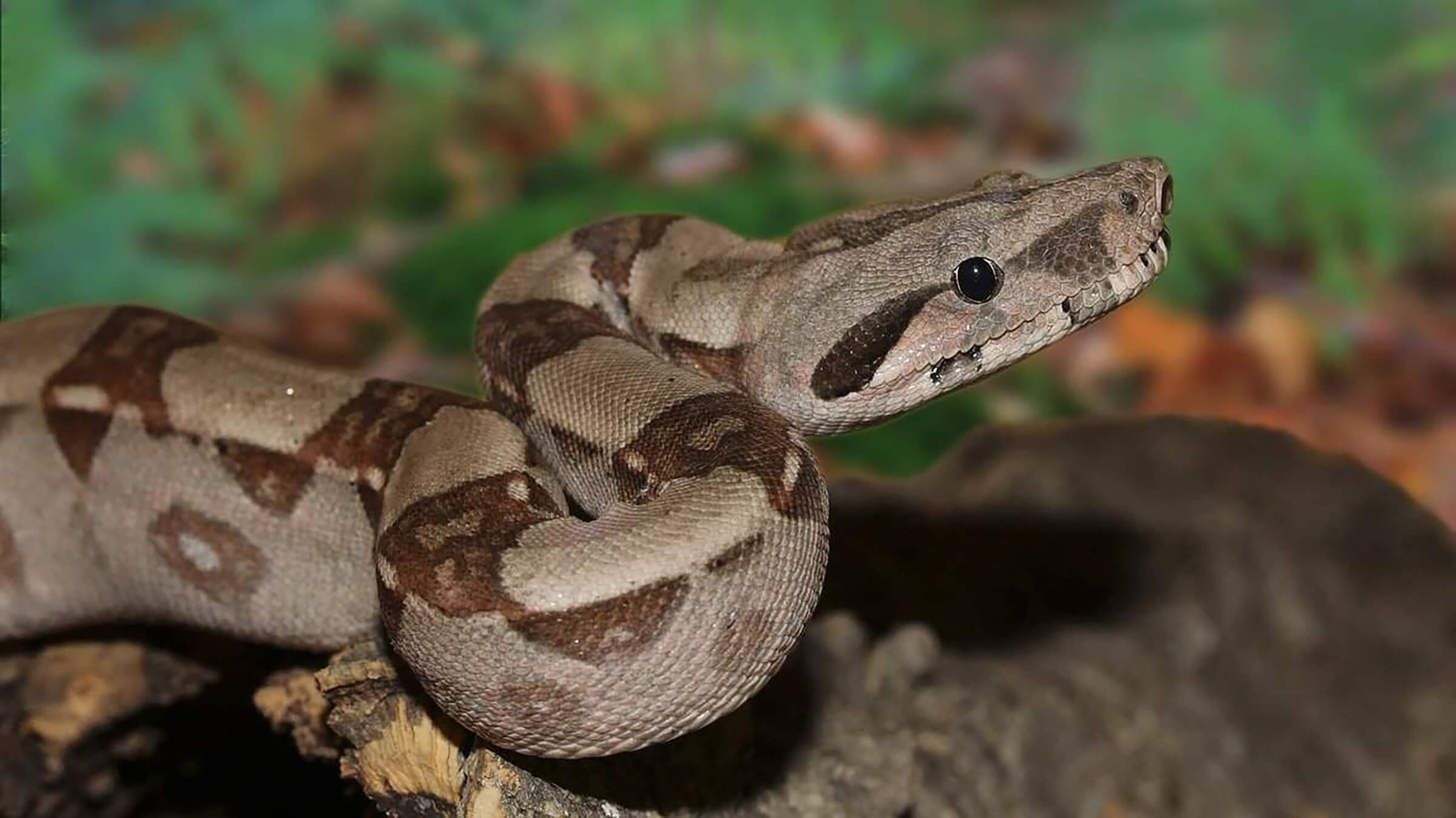

Fun Facts About Boa Constrictor
- Boa constrictors use heat-sensitive pits near their mouths to detect the body heat of prey in complete darkness.
- They can go several months without eating after consuming a large meal.
- Contrary to their fearsome reputation, boas are non-venomous and play a vital role in controlling rodent populations.
One of the most memorable encounters during Tamarindo ATV tours involves the iconic Mantled Howler Monkeys (Alouatta palliata). These remarkable primates are most active during early morning and late afternoon tours, offering guests a chance to witness entire family groups moving through the canopy. A typical family includes young males, females carrying infants, adventurous adolescents, and the vigilant alpha male overseeing his troop’s safety. The howler monkey’s distinctive call, which can be heard up to 3 miles away, often serves as nature’s alarm clock in Tamarindo. These vocalizations aren’t just random noise – they’re complex communications that help maintain territory and group cohesion. During one remarkable encounter, we witnessed the strong social bonds of these intelligent primates. After a young monkey was temporarily stunned by contact with an electrical wire, the entire colony’s vocal response demonstrated their remarkable social structure. A fellow troop member even descended to provide protection and support until the affected monkey recovered – a touching display of their social intelligence. This incident highlights the importance of wildlife corridors and conservation efforts. In many parts of Costa Rica, specially designed rope bridges now span roads, allowing monkeys to safely traverse between forest sections without risking contact with electrical lines or ground predators.
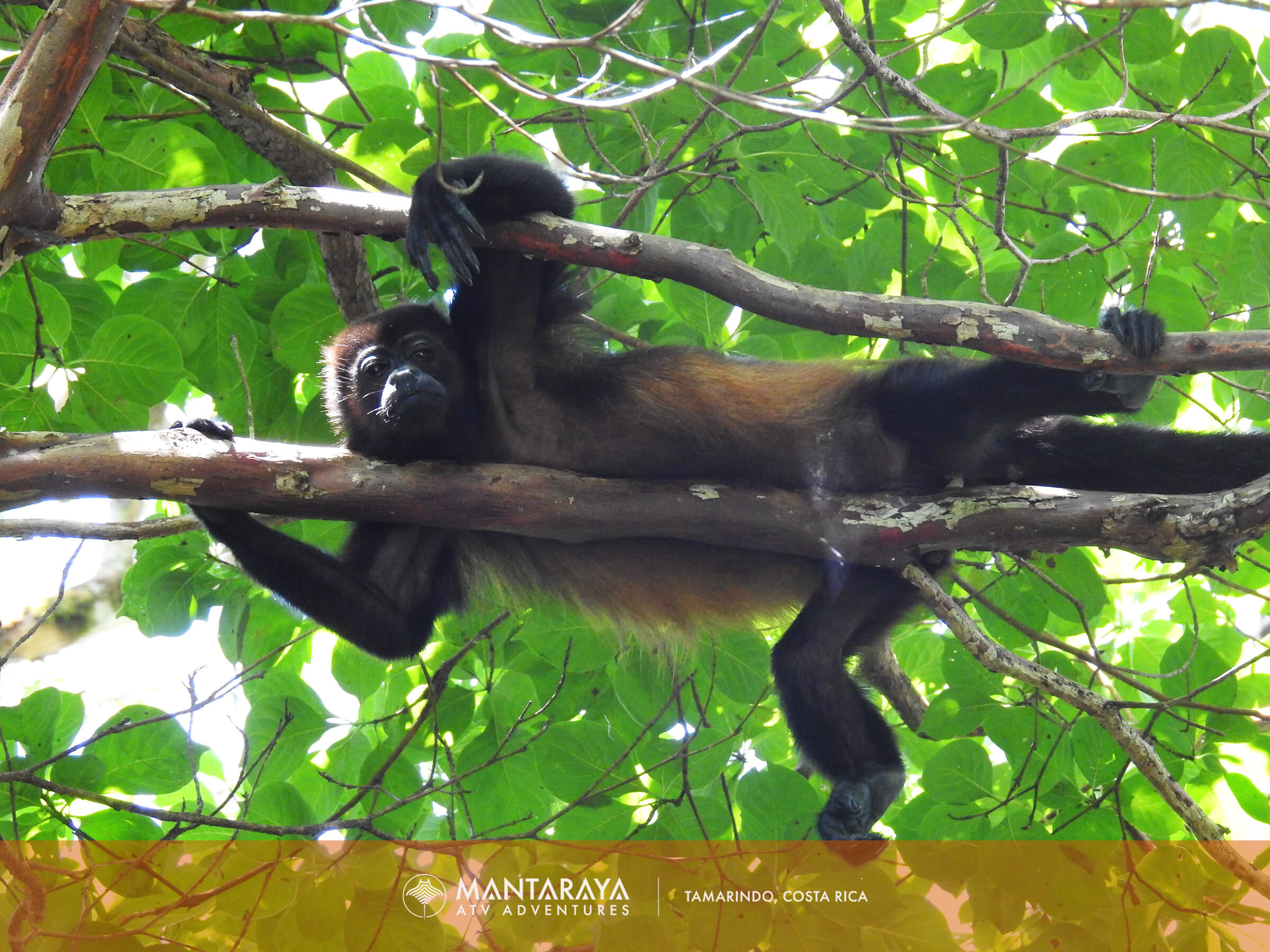

Fun Facts About Howler Monkeys
- Howler monkeys are the loudest land animals in the world; their calls can be heard up to 3 miles away.
- Their prehensile tails act like a fifth limb, helping them navigate the treetops with ease.
- They are herbivores, primarily eating leaves, which they digest slowly thanks to their specially adapted stomachs.
The forest edges also host White-nosed Coatis (Nasua narica), particularly along quieter trails. These curious members of the raccoon family can often be spotted foraging in small groups, their long, ringed tails held high as they search for fruits and small prey among the vegetation.
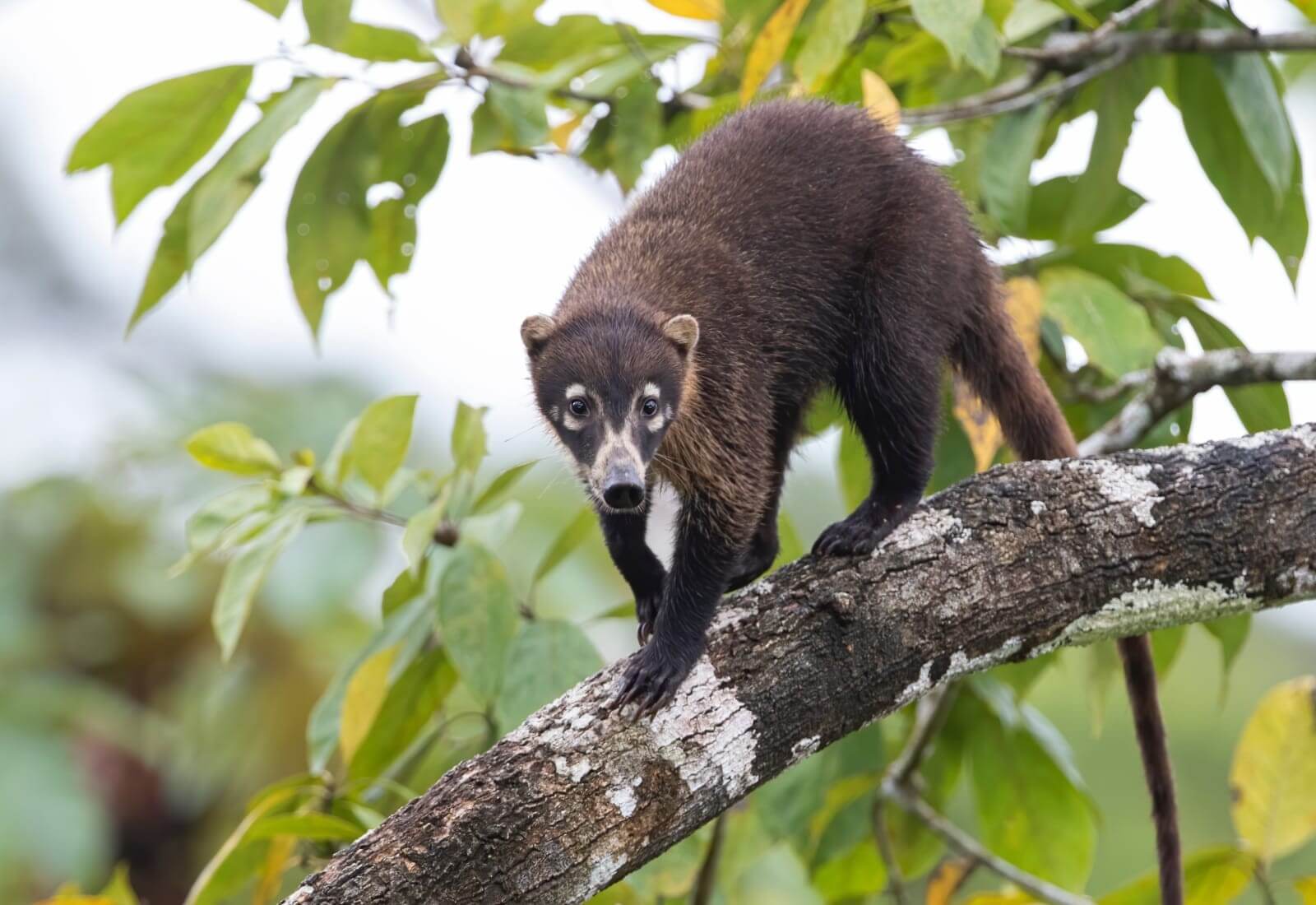

Fun Facts About White-nosed Coatis
- White-nosed Coatis are diurnal, which means they are active during the day – a rarity among raccoon relatives.
- They have a flexible diet, eating fruits, insects, and even small reptiles.
- Their long, ringed tails help them maintain balance while climbing trees.
Human-Adjacent Areas and Gardens
Some of our most enchanting wildlife encounters occur in unexpected places. At our very office in central Tamarindo, we regularly host a Cinnamon Hummingbird (Amazilia rutila) that spent an unusually long twenty minutes perched near our flowering plants – a rare treat given these birds’ typically restless nature.
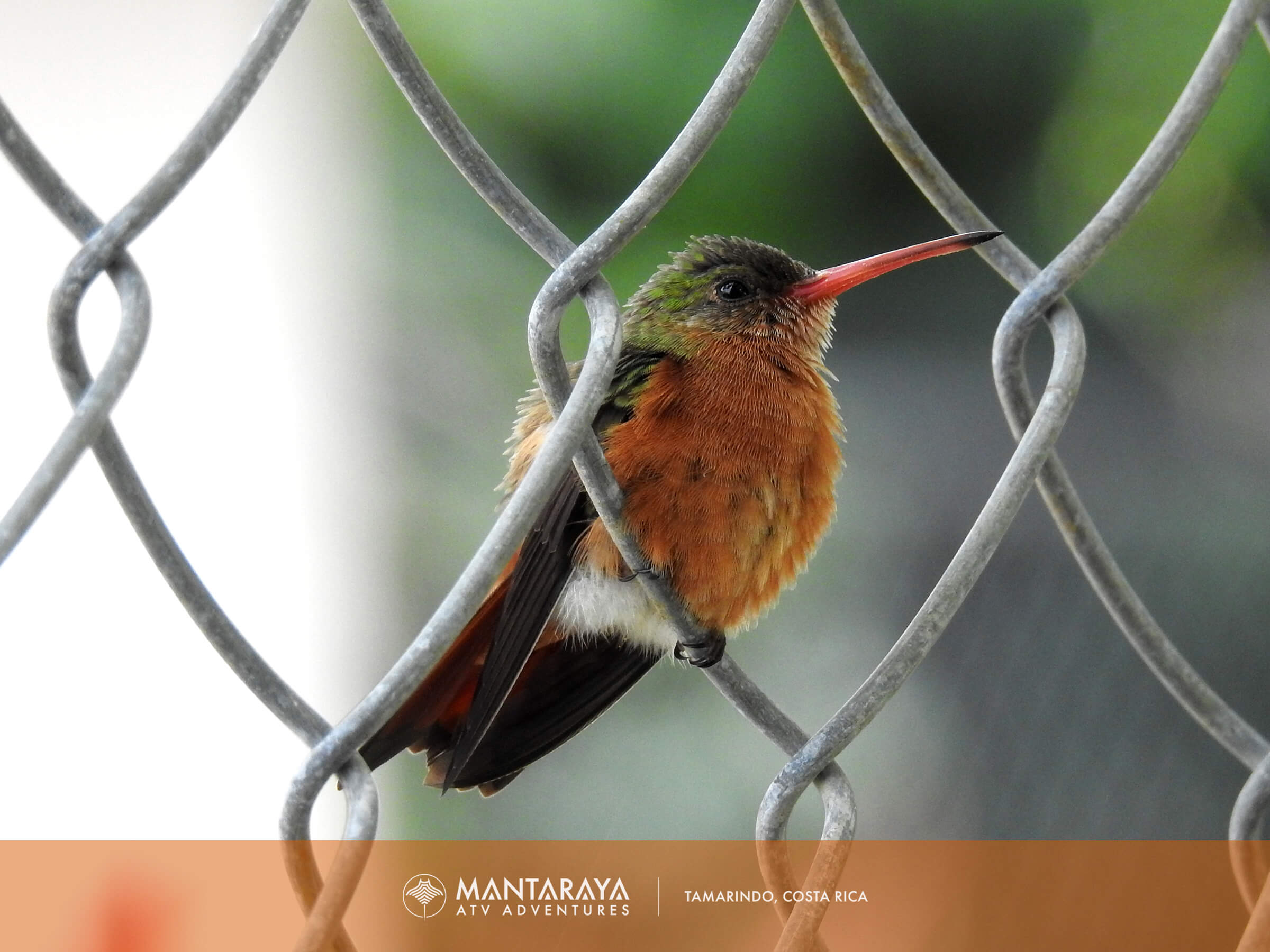

Fun Facts About Cinnamon Hummingbird
- These hummingbirds are territorial and often chase away larger birds from their feeding grounds.
- Their heart beats over 1,200 times per minute during flight.
- Despite their size, they can consume twice their body weight in nectar daily.
The garden areas around tour stops provide excellent opportunities to spot Great-tailed Grackles (Quiscalus mexicanus) and Melodious Blackbirds (Dives dives), while the charismatic Rufous-backed Wren (Campylorhynchus capistratus) often serenades visitors with its distinctive song.


Fun Facts About Great-tailed Grackles
- Great-tailed Grackles are known for their wide vocal range, producing sounds that resemble squeaks, whistles, and cackles.
- Males perform elaborate displays to attract females, including fanning their tails and puffing their chests.
- These birds are opportunistic feeders, thriving in urban areas thanks to their adaptability.
Green Iguanas (Iguana iguana) and Ctenosauras are frequent sightings in these areas, often basking in sunny spots or lounging in trees. Their prehistoric appearance makes them popular photography subjects during tour stops.


Fun Facts About Green Iguanas
- Green Iguanas are excellent swimmers, often diving into water to escape predators.
- They can regrow their tails if they lose them during an escape.
- These herbivores have a “third eye” on their head, a light-sensitive organ that helps detect predators.
Family-Friendly Tamarindo Wildlife Viewing
Our tours welcome wildlife enthusiasts of all ages, with special considerations for families. Children aged 5 and above can join as passengers with guardians, while those 16 and older with valid driver’s licenses can operate their own ATVs. Each participant receives comprehensive safety equipment, including helmets, and drivers wear reflective bands for enhanced visibility.
Responsible Wildlife Viewing Guidelines
Practical Tour Information
Essential Preparations
- Wear comfortable clothing suitable for riding
- Bring sun protection (hat, sunscreen, sunglasses)
- Carry water to stay hydrated
- Bring a camera for wildlife photography
- Wear closed-toe shoes
Tour Options
Our tours range from 2 to 4 hours, with various start times throughout the day. The 4-hour tours, particularly those starting at 7:30 AM, often provide the most comprehensive wildlife viewing opportunities.
Frequently Asked Questions
Q: What’s the best time of day for wildlife viewing on Tamarindo ATV tours?
A: Early morning tours, starting at 7:30 AM, typically offer the best wildlife viewing opportunities when animals and especially birds are most active.
Q: Are wildlife sightings guaranteed?
A: While our tours access prime wildlife habitats, sightings are never guaranteed as we observe animals in their natural environment.
Q: Is it safe to view wildlife during the tour?
A: Yes, our experienced guides ensure safe viewing distances and provide clear safety protocols for wildlife encounters.
Q: Can I bring my camera?
A: Yes, we encourage photography during designated stops, though we recommend securing cameras during ATV operation.
Go to all => Frequently Asked Questions About Tamarindo ATV Tours
Whether you’re an avid nature photographer or a family looking for adventure, Tamarindo ATV tours offer unique opportunities to explore Costa Rica’s incredible wildlife. While the thrill of riding through diverse terrains is exciting, it’s often the quiet moments observing local fauna that create the most lasting memories. Book your wildlife adventure today and discover why our ATV tours in Tamarindo have become a favorite way to experience Costa Rica’s natural wonders.
Reserve your spot in our 2-hour, 3-hour and 4-hour tours to experience the majesty of mother Nature in Tamarindo, Guanacaste, Costa Rica.
